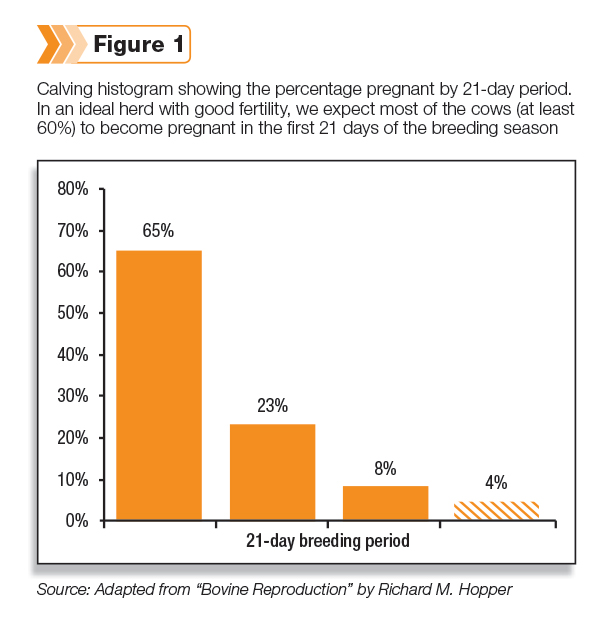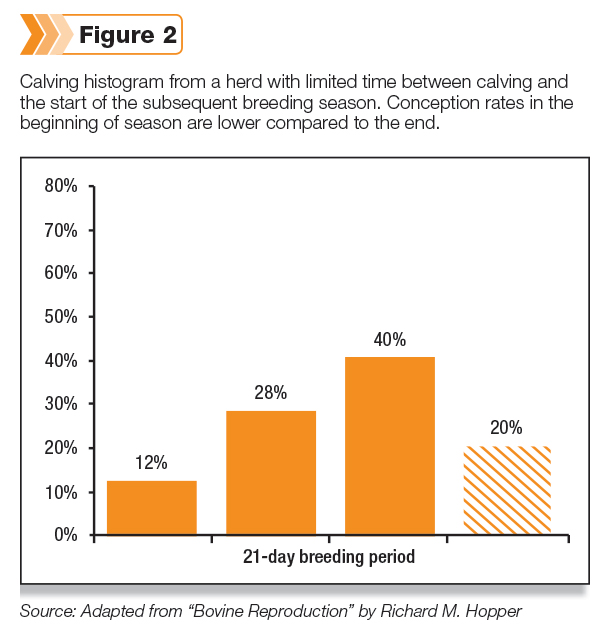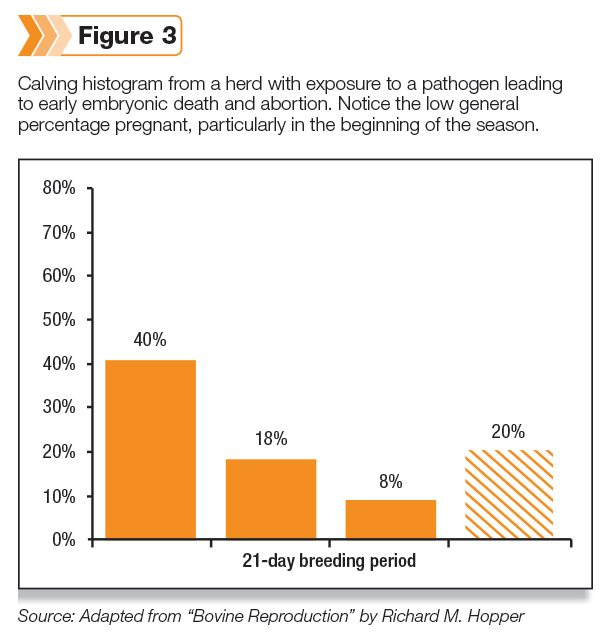In order to improve reproduction, we have to be able to measure performance. Since “we can’t measure what we don’t know,” it is important to have a thorough record system that can identify and track individual animals and their reproductive performance.
Data collection can be recorded as simply as using an index card for each cow, or a computerized spreadsheet database can be maintained.
The minimum data required is: reliable cow identification, age, breed, group, body condition score, breeding dates, estimated days pregnant, vaccination history, sire information (breeding soundness evaluations, “trich tests” and male-to-female ratio) and nutritional information (pasture site, supplementation).
Most of those can be collected chute-side during pregnancy diagnosis and processing. Regardless of the collection method, data is only useful if it facilitates decision-making.
In order to use this database for evaluating the success of the breeding program and to troubleshoot problems, there are a few measurements that can be utilized to create a reproductive profile:
Percent pregnant
This is calculated by taking the number of pregnant cows divided by the number of cows exposed to bulls. This measure gives us the basic information on the success of the breeding season.
However, we don’t know anything about how fast the cows become pregnant and what factors were affecting herd performance.
Length of calving season
This is defined as the number of days from birth of the first calf to birth of the last calf in the season. The length of calving season will influence the uniformity of calf crop and the total pounds of weaned calves.
In a long calving season, some of the calves will take longer to grow until selling – and some a very short time.
Moreover, cows that calved late in the season will have a shorter time to recover before the next breeding season, which can adversely affect their fertility.
One of the most effective ways of shortening the calving season is to select for cows that calved early in the season. Identifying those “early cows” can be done by recording individual calving or by utilizing the gestational aging estimated by the veterinarian during pregnancy checks.
Number of calves born in the calving season per number of cows exposed to bulls in the breeding season
This measure is based on both successful conception and the maintenance of pregnancy to parturition. A decrease below 85 to 90 percent should be considered a problem that merits further investigation.
Breeding histogram (breeding/calving distribution)
The histogram shows the percentage of females bred in each 21-day period from the beginning of the breeding season to the end. Twenty-one days is the average length of the cow estrous cycle so, ideally, we expect all of the cows in a given group to come into heat at least once during this period.

The breeding histogram is based on aging of pregnancy estimated by the veterinarian during pregnancy checks or by recording calving dates and distribution of calving during the calving season (not always possible under most beef cattle management systems).
The histogram can show how fast cows become pregnant during the breeding season and can potentially indicate adverse events such as temporary sire infertility, early embryonic losses, abortions and heat or nutritional stress.

The breeding histogram gives us a valuable tool to detect reproductive problems and improve for the next season.
Pounds of weaned calf per cows exposed to bulls
This is defined as the total calves weaning weight divided by the number of cows exposed to bulls in the breeding season.
Since weaned calves are the primary source of income in cow-calf operations, this is the most important, bottom-line measure that is based on all of the above (percent pregnant, percent calving, distribution of calving season, age of herd and length of calving season).
Relationship between different variables and pregnancy
The database can help establish correlations between pregnancy and different variables like body condition score, group of animals, age and different pasture ranges. That can help to troubleshoot problems and facilitate decisions regarding animal selection, pasture selection and the need for nutritional supplementation.

In summary, high reproduction efficiency that results in a high and uniform calf crop is strongly associated with financial success. Establishment of a good record system can help the herd manager and the treating veterinarian track herd reproductive performance.
Knowing the herd reproductive profile – including percentage pregnant, percentage calved, calving distribution (histogram), length of calving season and correlation of pregnancy to age and body condition score – can help facilitate strategies for improvement and compare performance between breeding seasons, ensuring a move toward an efficient and financially successful herd. ![]()
Dr. Jonathan Berkowic, DVM, is a resident veterinarian at UC Davis Livestock Herd Health and Reproduction Service.







